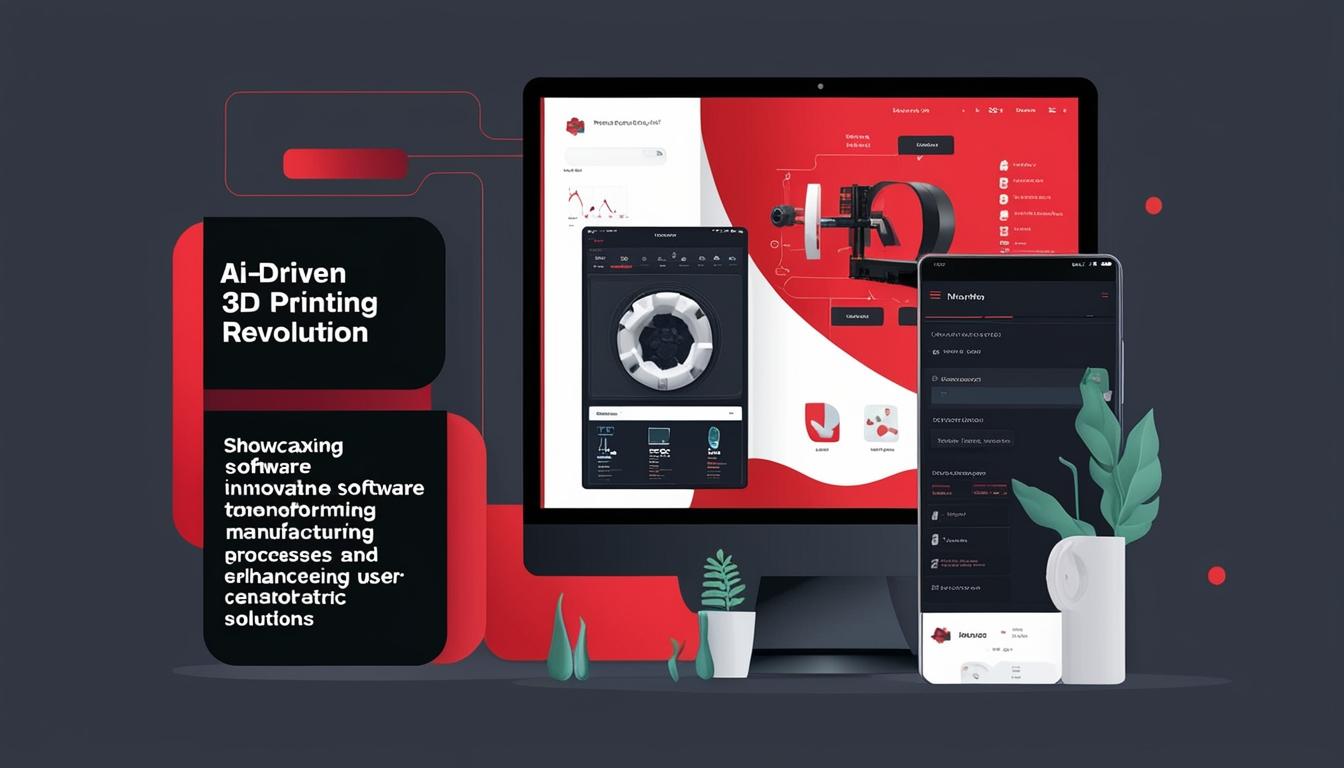Emerging trends in AI automation within the 3D printing software sector are set to reshape business practices across the industry, according to recent insights from key figures and corporations. As companies focus on developing indispensable software platforms, there is a convergence of authoring, workflow, and slicing technologies, sparking investment interest from various quarters. The transformative potential of software is becoming increasingly evident, with advancements leading to reduced manufacturing costs, optimised processes, and diminished scrap rates, thereby enhancing profitability.
Prominent voices within the sector stress that the shift from purely technological concerns to an emphasis on customer-centric solutions is essential for future prosperity. Brigitte de Vet-Veithen, CEO of Materialise, highlighted this by stating, “The AM industry used to be all about technology, but we must realize that a user wants a solution.” De Vet-Veithen underscored the importance of understanding customer needs and applications to drive value, advocating for greater industry collaboration to create comprehensive end-to-end systems. This sentiment is echoed in the industry call for partnerships, as the Leading Minds Initiative seeks to promote collaborative discussions aimed at expanding market opportunities.
The future of additive manufacturing (AM) is also perceived as being heavily influenced by artificial intelligence. Karsten Heuser, Vice President of Additive Manufacturing at Siemens, remarked, “AM is set for significant trends by 2025, with major cost reductions and increased production volume.” Heiser anticipates that AM will become increasingly integrated with traditional production methods such as casting and milling, with China poised to lead in growth while Europe and the United States advance their market applications. He placed a strong emphasis on the role of industrial AI in enhancing design workflows, suggesting it will simplify complex AM tasks and speed up processes.
Industry editor Stephen Holmes noted some caution about the capabilities of AI, suggesting that while generative AI is still in its infancy regarding parametric 3D modelling, AI tools are on the rise in standard CAD software to enhance modelling speed and complexity management. He pointed to emerging companies like PanOptimization that focus on process and design optimisation. This indicates a broader trend toward greater specialisation in the AM software market, with firms recognising the necessity for targeted offerings amidst increasing competitive pressures.
Pan Michaleris, founder of PanOptimization, expressed expectations for an increase in tools aimed at process and design optimisation, which aligns with the trend towards greater AI integration. In contrast, Omar Fergani, CEO of 1000 Kelvin, offered a more sobering appraisal of the challenges facing the industry, citing high costs, subpar part quality, and a reliance on outdated software. Fergani articulated the potential for AI to revolutionise the sector, stating, “AI isn’t optional—it’s essential.” He positioned AI as a critical component in addressing the industry’s systemic limitations and bridging the talent gap left by attrition to other fields.
The emerging dynamics indicate an evolving interplay between software capabilities and market requirements. Alexander Oster of Autodesk noted the mixed health of the current software market, underscoring that while some established firms remain undervalued, many cash-strapped startups may struggle to find sustainable footing. "It will be a very tough year for the latter,” he asserted, hinting at potential consolidations within the sector.
Market analysts indicate that the importance of open-source developments is likely to rise further, having previously transformed sectors within 3D printing. As technology commoditises, differentiation may increasingly rely on advanced AI applications rather than traditional manufacturing methods. This evolution is expected to provoke shifts in operations, moving from full-solution providers to system integrators that cater specifically to customer needs.
The advent of subscription-based business models is also reshaping the landscape, launching new software functionalities designed to enhance user engagement. This trend exemplifies the intersection of software innovation and user demand, giving rise to tools that (for example) convert text to 3D print models, thereby broadening user accessibility.
Overall, the 3D printing sector appears poised for significant change, with players across the landscape keenly navigating the dual imperatives of collaborative innovation and technological advancement. As firms continue to invest in AI and adapt their offerings, the stage is set for a transformative era in additive manufacturing.
Source: Noah Wire Services
